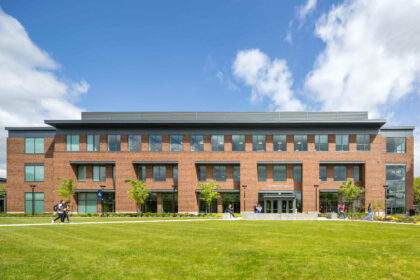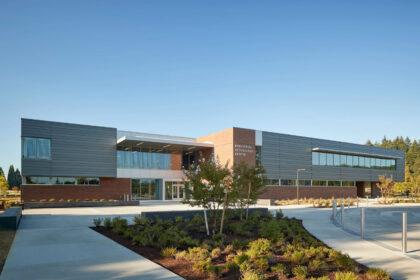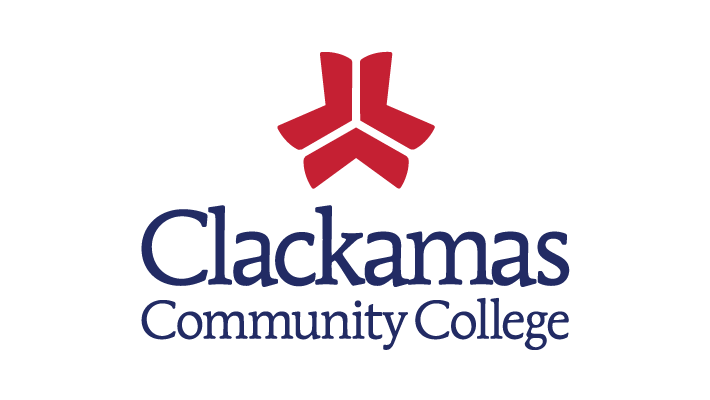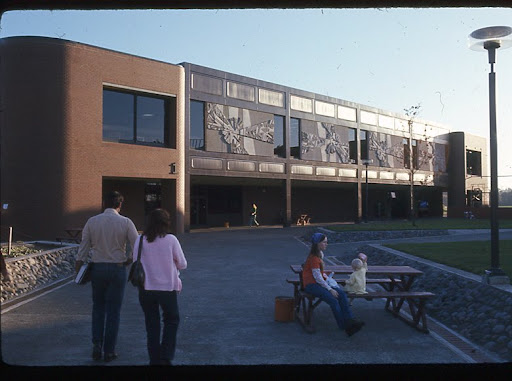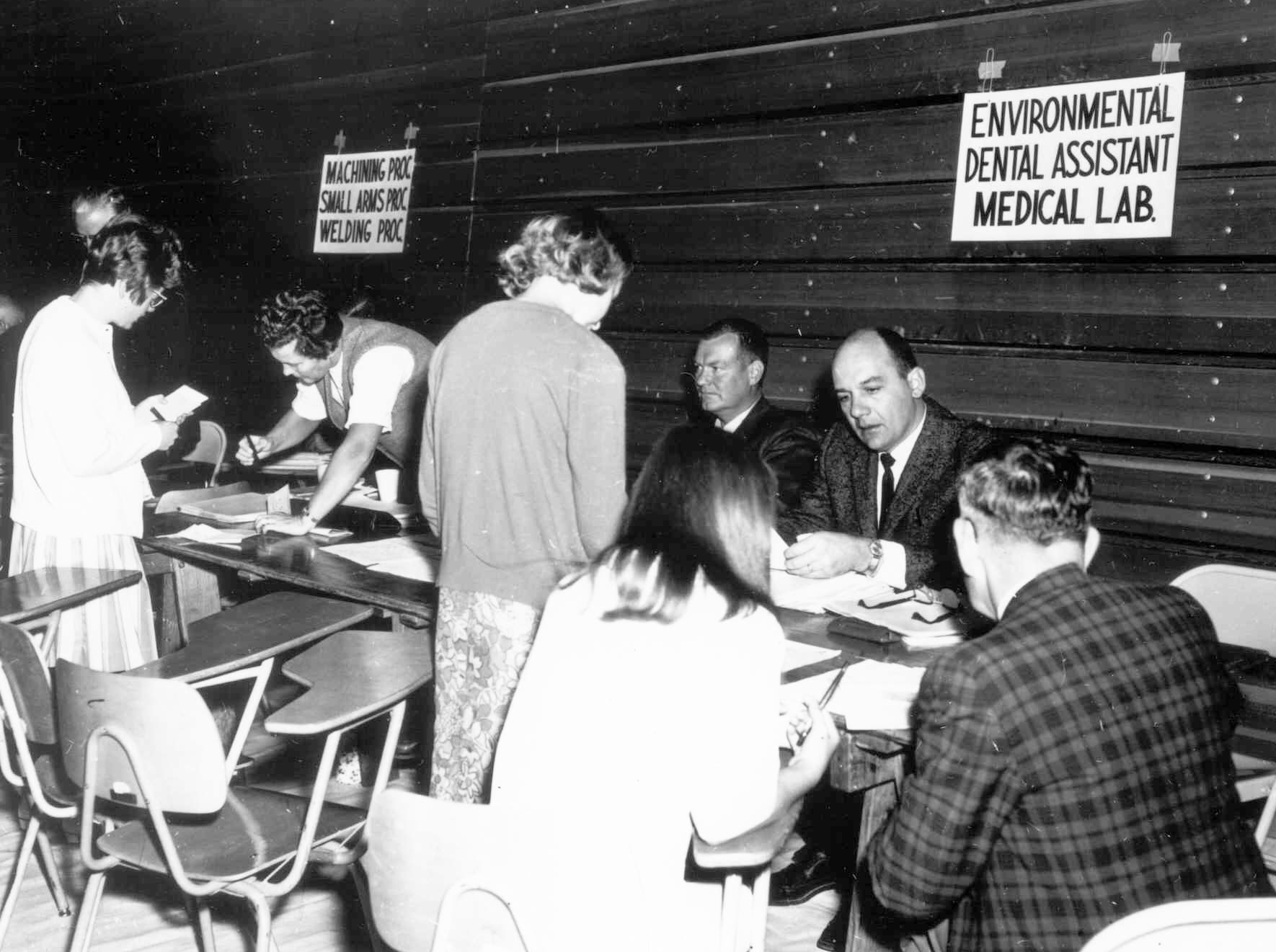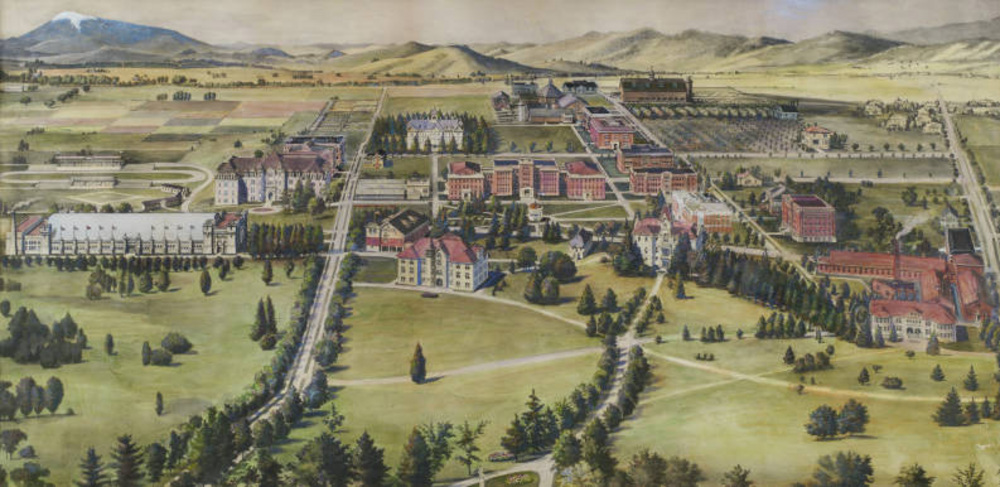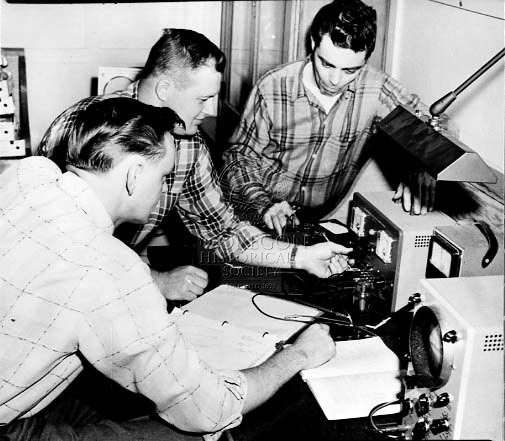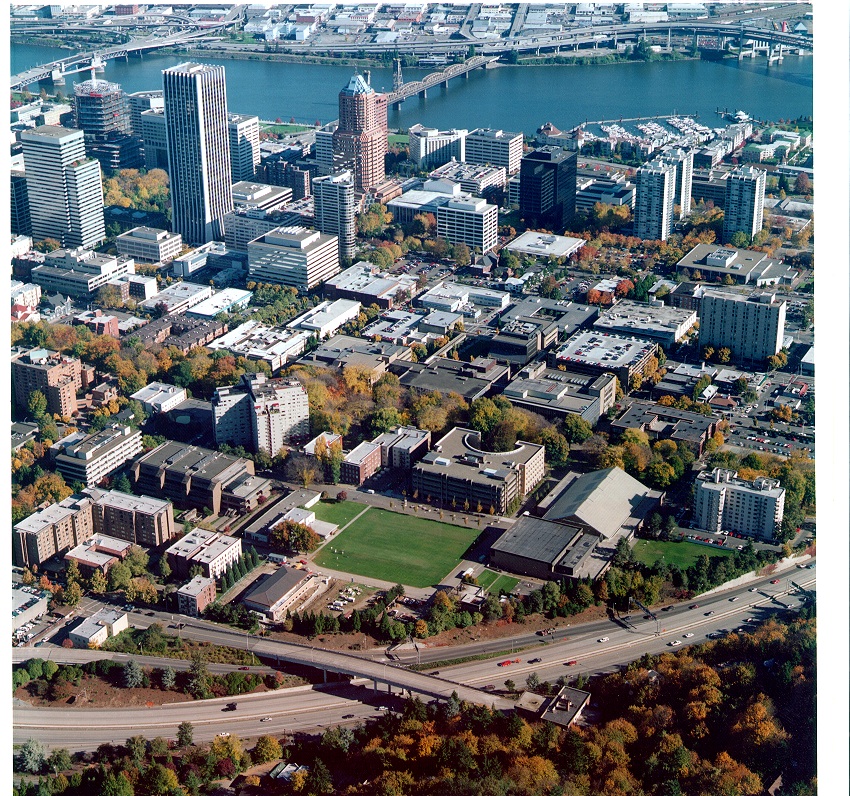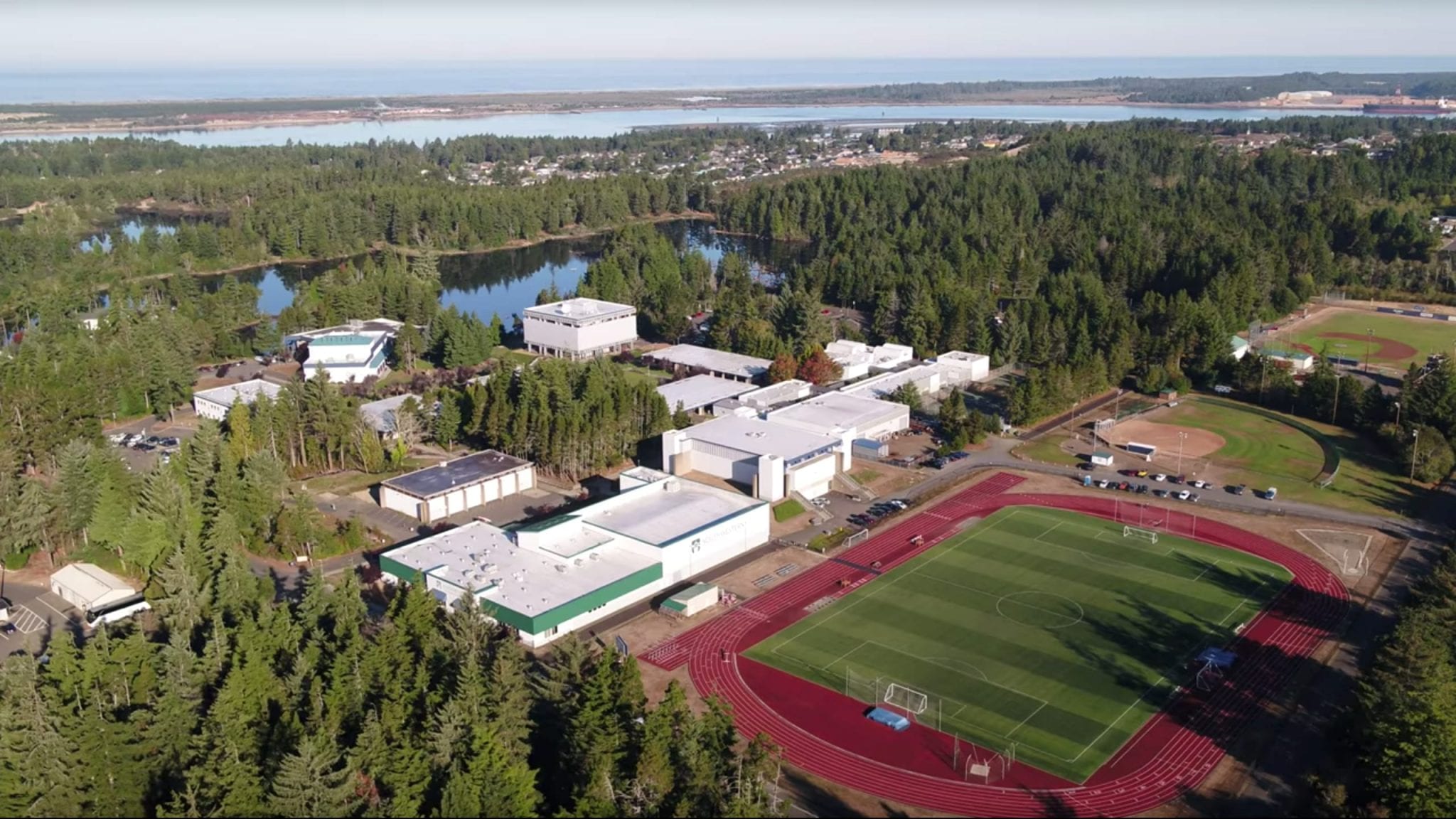In May 1966, following four years of work by a grassroots citizens’ planning committee, 62 percent of the voters in the proposed district in Clackamas County supported the formation of the Clackamas Community College District. When students stated enrolling for classes the following fall, Clackamas became Oregon’s eighth community college. Its district includes most of Clackamas County, except for Lake Oswego (served by Portland Community College) and Sandy, Damascus, and Boring (served by Mt. Hood Community College). Clackamas Community College (CCC) was granted full accreditation in 1971.
Founding CCC President Roy Mikalson established the school’s operations in temporary facilities on Warner-Milne Road. Before leaving in 1968, he completed arrangements to acquire 175 acres in Oregon City near the junction of Molalla Avenue and Beavercreek Road.
After Gene Voris’s term as president in 1968-1969, John Hakanson, who had been CCC’s first dean of instruction, served as president between 1969 and 1984. He was responsible for the rapid development of the main campus in Oregon City. A consummate campaigner, Hakanson led annual election efforts to secure taxpayer support for college operations. In 1978, he gained legislative approval for a new funding approach that required local elections every second or third year. Hakanson received national recognition for his leadership in establishing a comprehensive program of community schools.
President John Keyser (1985-2001) helped lead the opening of Milwaukie’s Harmony Center in 1988 and the Wilsonville Center in 1992, both of which grew to become satellite campuses. In 2001, the Wilsonville facility expanded to include the Utility Training Alliance, a partnership to train technicians for power companies. In 2008, Harmony became the location for the school’s Center for Health Education. During Keyser’s tenure, two bond issues to expand facilities were passed and the College Foundation raised millions of dollars for facilities and scholarships. In addition, partnerships with district businesses and organizations were established and strengthened.
Joe Johnson, who served as president between 2001 and 2006, provided oversight for a number of construction projects. These included the (John and Ginger) Niemeyer Center for the arts and the (Carol) DeJardin Hall for allied health, both named after generous donors, and (Roger) Rook Hall, named for the former district attorney who served thirty-two years on the CCC board of trustees. During Johnson’s tenure, programs were expanded at the satellite campuses and at sites in Canby, Estacada, and Molalla.
In 2007, Joanne Truesdell became CCC’s first woman president and the first former student to hold the position. During her tenure, the college continued to grow despite severe economic pressures. Truesdell’s team delivers more than eighty career/technical programs in addition to transfer programs with dual enrollment options with Oregon State, Oregon Institute of Technology, and Portland State University.
College preparation programs and community education courses contribute to making Clackamas the fourth largest of Oregon’s comprehensive community colleges, serving over 35,000 students each year.
-
![]()
Harmony West building at the Milwaukie campus, Clackamas Community College.
Courtesy Clackamas Community College
-
![]()
Industrial Technology Center, Clackamas Community College.
Courtesy Clackamas Community College
-
![]()
Clackamas Community College logo.
Courtesy Clackamas Community College
Related Entries
-
![Chemeketa Community College]()
Chemeketa Community College
Chemeketa Community College had its beginnings as the Salem Technical-V…
-
![Oregon Institute of Technology (Oregon Tech)]()
Oregon Institute of Technology (Oregon Tech)
The Oregon Institute of Technology (OIT, also now known as Oregon Tech)…
-
![Oregon State University]()
Oregon State University
Oregon State University (OSU) traces its roots to 1856, when Corvallis …
-
![Portland Community College]()
Portland Community College
Portland Community College (PCC) is the largest institution of higher e…
-
![Portland State University]()
Portland State University
Located in downtown Portland, Portland State University is Oregon’s urb…
-
![Rogue Community College]()
Rogue Community College
Josephine County voters approved the establishment of Rogue Community C…
-
![Southwestern Oregon Community College]()
Southwestern Oregon Community College
Southwestern Oregon Community College (formerly SWOCC, now SOCC) in Coo…
-
![Umpqua Community College]()
Umpqua Community College
A sweeping horseshoe bend of the North Umpqua River wraps the 100-acre …
Map This on the Oregon History WayFinder
The Oregon History Wayfinder is an interactive map that identifies significant places, people, and events in Oregon history.
Further Reading
Keyser, John. Transforming Lives, the History of Clackamas Community College. Oregon City, Ore.: Clackamas Community College Foundation, 2011.

